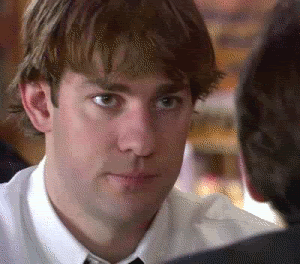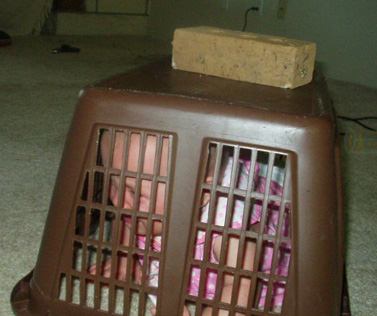![]()
It's been over a month, and the A's aren't the powerhouse everyone said they would be. Are the club's blockbuster trades at the root of the problem?
Since A's general manager Billy Beane broke the bank and went all-in at the July non-waiver trade deadline, Oakland hasn't turned into the unbeatable force it was expected to become.
Far from it, in fact. Since the beginning of August, when the A's led the AL West and had the best record in baseball, Beane's club has lost 19 of 32 games while the division-rival Angels rode a 19-10 August into first place in the West.
But is this a test case of correlation not implying causation? Let's take a closer look and see if the players brought over at the deadline, and the absence of those lost in the trades, are the actual causes of Oakland's problems.
Beane shocked us all with this one, and it certainly might come back to bite the A's in the future. (Especially if Lester signs elsewhere this offseason.) But in the short term, this deal is already looking like a good one for the A's.
One of the main gripes about the trade was that the A's supposedly had "enough pitching" without Lester, having dealt for Jeff Samardzija weeks before. Scott Kazmir was looking like a Cy Young contender at the time, and Sonny Gray was already the ace of the rotation.
All too quickly, it's becoming apparent why the A's really do need Lester. Kazmir posted a 7.80 ERA in August and has allowed 13 runs in his last 4.1 innings. Even Gray is looking rather mortal; he's allowed three or more runs in six consecutive starts with a 5.84 ERA over that span.
But even if the Oakland's top starters had kept their form, Lester would have been a welcome acquisition. It's truly impossible to have too much pitching in October, and Lester is doing all he can to help the team get there in the first place.
Some of the other hitters on the team have picked up the slack a bit in Cespedes' absence. Josh Reddick hit .271/.319/.482 in August. Brandon Moss—Cespedes' replacement in left field—has struggled at the plate but still managed to draw 18 walks last month, good for a .340 OBP. The latter has also been surprisingly solid defensively, with a positive outfield UZR for the first time since 2010.
Cespedes hasn't exactly dominated in Boston, either. He's drawn three walks in 124 plate appearances, and his .756 OPS is a small step below the .767 total he posted with the A's this year.
Gomes, who has seen limited playing time since going to Oakland, has a .349 OBP in 43 PAs but hasn't found much success otherwise. Even so, the eccentric outfielder is a good fit for the A's. He's moving back to his 2013 ballclub, and the Coliseum is about an hour drive from his hometown of Petaluma. Gomes is happy to be back, as he told FOX Sports Radio's Jay Mohr, and the A's hardly could have found someone who fits the clubhouse dynamic better.
Samardzija has seen a bit of a dip in his effectiveness since moving to Oakland, posting a 3.57 ERA in 11 starts while failing to live up to the numbers he posted with the Cubs.
But taking Samardzija's Oakland stats at face value really doesn't do the right-hander much justice. For one, moving to the AL West from the NL Central would likely hurt most pitchers' ERAs, and it's also worth noting that one very poor start against the Mets in August has badly skewed Samardzija's Oakland ERA. He has also nearly doubled his K/BB ratio since the trade, while eating up a ton of innings. Only once—against the Mets—has he failed to go six frames, and he's pitched 7+ in all but four starts.
That said, it's perhaps too early to judge Samardzija's performance, as his value will mostly be measured in how he performs down the stretch as the A's vie for the division crown.
Like Samardzija, Hammel found success in Chicago to open up the season, but he imploded after going to Oakland. After allowing 18 runs in his first 17 innings, however, the right-hander has settled down to post a 2.86 ERA in August with three quality starts in his last four outings.
Hammel's best start with the A's was his most recent one, when he allowed four baserunners (three hits, one walk) and a run in eight innings against Seattle. The performance helped the A's snap a four-game losing streak, and it earned the praise of Hammel's catcher, Geovany Soto.
"He was terrific today, moving the ball in and out, really consistent in the strike zone," Soto told the San Francisco Chronicle's Susan Slusser. "He’s been throwing the ball really well. He looks confident. He looks really good."
(Soto, I'll add, came over from Texas on Aug. 24 and has reached base in six of his 14 plate appearances.)
Unlike the other major A's trade, this deal involved a few of the organization's top prospects, making it difficult to actually assess how balanced the move really was. Russell has been his usual self since going to the Cubs' Double-A Tennessee club, hitting .294/.332/.536 with 12 homers in 50 games. McKinney has a .390 OBP at High-A Daytona and Straily, called up by the Cubs when rosters expanded, allowed seven runs (five earned) in his first start with Chicago.
At the time, this one didn't make a whole lot of sense. Didn't the A's have too many outfielders? Why trade Milone, who had a 3.55 ERA in 16 starts with the A's, for a platoon player?
But here's a better question: Who are we to doubt Billy Beane? Since going to Minnesota, Milone has a 7.84 ERA in five starts, while Fuld has proven his value and then some.
Of course, the A's didn't bring Fuld over to be Barry Bonds, and his numbers at the plate are indeed rather ugly. (.221/.275.352.) But as a late-inning defensive replacement, Fuld has excelled in Oakland, and his fielding is off the charts—almost literally. In 264.1 innings, Fuld's UZR/150 is a ridiculous 30.0, which would be second in the majors at all positions if he qualified. That includes the seven games he played for the A's at the beginning of the season, but the point remains the same: Fuld is a huge defensive weapon for the A's in the later innings, à la Gregor Blanco across the bay.
Plus, don't forget the huge homer Fuld hit against the Angels in late August. That could become especially significant if the standings come down to the wire by the end of the season.
So, why are they losing?
This goes back to the first section, in which I discussed the Lester-Gomes-Cespedes swap. Oakland's top starters — namely Gray, Kazmir and Jesse Chavez— have all struggled simultaneously, and the results haven't been pretty. Lester has since replaced Chavez in the rotation, but that can't entirely solve the issue of a team's top two starters falling off a (figurative) cliff.
But it's not quite that simple. Oakland's breakout hitters have been unable to maintain their fast starts, and as a result, the A's ranked 22nd in the majors in runs scored in August — not a good thing to combine with a rotation that's seeing its two ace pitchers struggle mightily.
Stephen Vogt, who has been fantastic this year, nevertheless hit .212/.247/.376 in August and has six hits in his last 33 at-bats. All-Star catcher Derek Norris, despite his spectacular mullet, is hitting .189/.277/.284 over the last 28 days, per Baseball Reference, and his OPS is 228 points lower in the second half than it was in the first.
Of course, injuries have wrecked the A's in recent months. Outfielder Coco Crisp has played sparsely, appearing in only 103 games this year. Remember Jed Lowrie, John Jaso and Sean Doolittle? None of them had played since Aug. 23 until Lowrie's return on Monday. The A's could come back strong once their key injured players heal, but until then, the team will have to work hard to stay within striking distance of the first-place Angels.


























